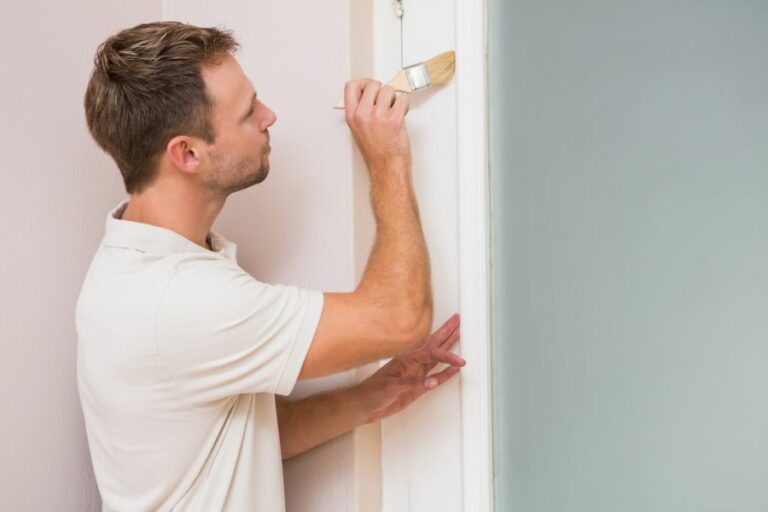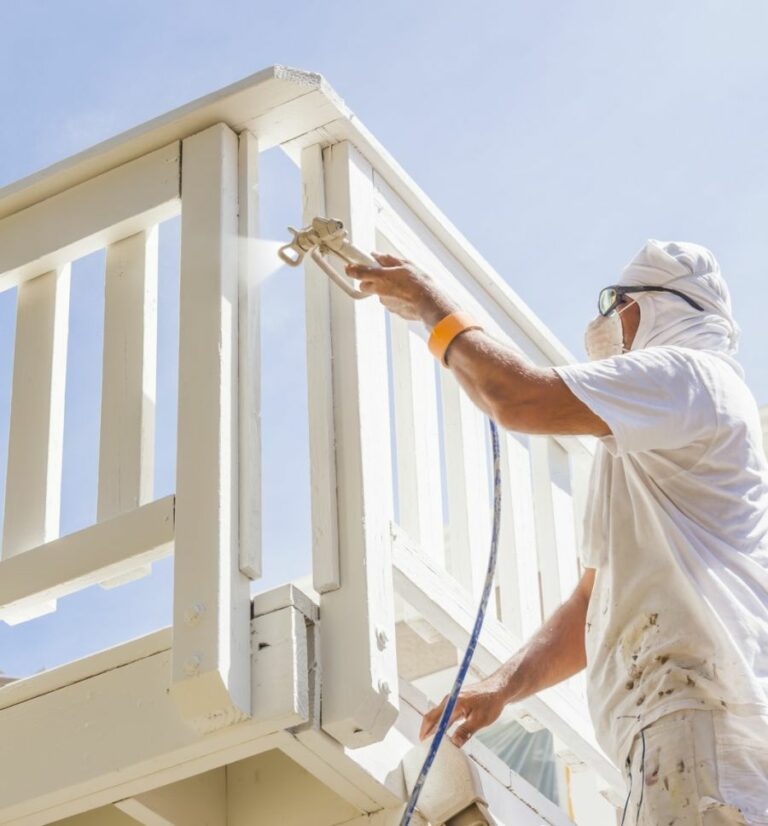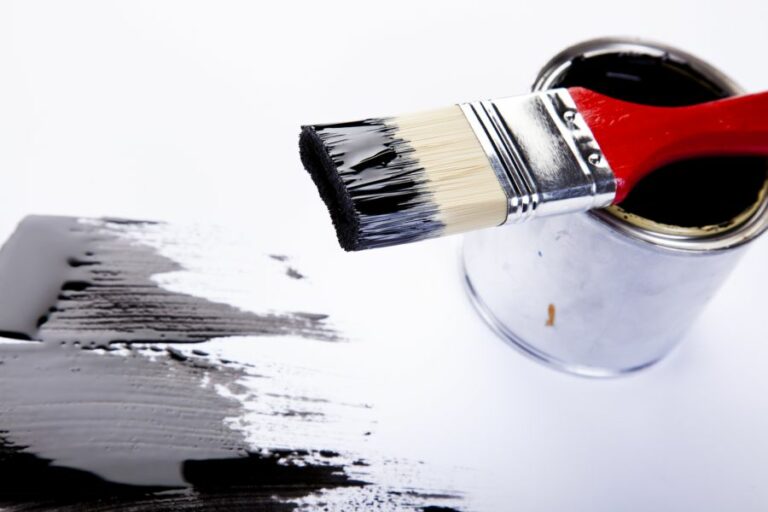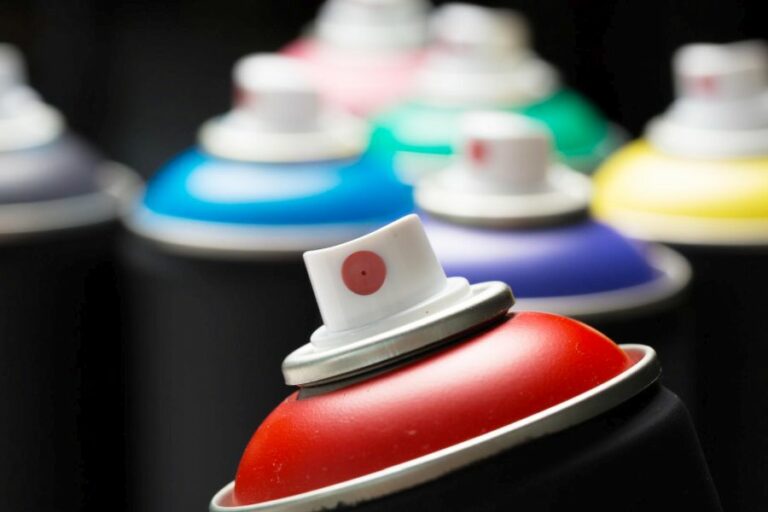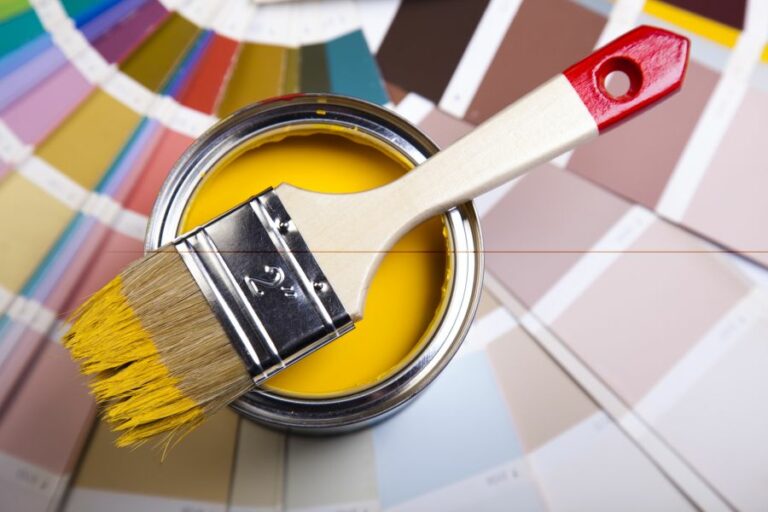Outdoor Paint Colors For Homes, 25 Things You Should Know
Choosing the right outdoor paint colors for your home can be a crucial decision that significantly impacts the overall curb appeal and resale value. With endless options available, it can feel overwhelming to make the perfect choice. But worry no more, as we’ve compiled expert tips and advice on selecting the ideal outdoor paint colors that enhance your home’s beauty and blend harmoniously with the surrounding environment.
Outdoor paint colors for homes:
When choosing outdoor paint colors for residential properties, consider the home’s architectural style, materials used in construction, surroundings like landscape and climate, color psychology, and durability. Popular paint colors include whites, grays, blues, greens, and reds. Use a harmonious color palette and test colors on the home before deciding.

Ready to give your home a fresh, new look with an outdoor paint makeover? We’ve got you covered with a curated list of stunning color ideas for every style. Keep reading to discover tips and trends for choosing the perfect exterior palette and creating impressive curb appeal!
Contents
- 1 Exterior Paint Color Options for Residential Properties
- 2 What are the most suitable exterior paint colors for a house?
- 3 What is the Most Commonly Preferred Color for Exterior House Paint?
- 4 What are the most effective exterior house paint colors for withstanding hot weather conditions?
Exterior Paint Color Options for Residential Properties
A fresh coat of paint can work wonders in enhancing your home’s curb appeal. However, choosing the right outdoor paint colors can be overwhelming, considering the plethora of options available.
• Understanding the Architectural Style and Materials of Your Home
Before diving into specific color options, it’s essential to consider your home’s architectural style and the materials used in its construction. These elements often dictate the types of colors that work best with your home’s design.
For example, a traditional Victorian-style house may call for more intricate paint schemes, while modern architecture typically favors minimal and monochromatic color palettes. Similarly, homes made of brick or stone may require different paint color considerations compared to those with siding or stucco.
• The Importance of Your Home’s Surroundings
The location of your home plays a significant role in determining appropriate exterior paint colors. Consider the following aspects of your home’s surroundings when selecting paint shades:
- Neighborhood: If your home is located in a community with strict regulations, you might be limited to approved color schemes. Additionally, it’s essential to choose colors that complement the neighborhood while still allowing your home to stand out.
- Landscape: The natural elements surrounding your home, including trees, foliage, and bodies of water, can impact your color choices. For instance, homes in desert regions tend to look best with warm, earthy tones, while coastal properties often feature soft blues, greens, and whites.
- Climate: The climate where you live should also factor into your paint color decisions. Homes in colder regions can benefit from darker exterior colors that absorb heat, while lighter shades reflect sunlight and help keep homes cooler in warmer climates.
• Considering Color Psychology
Color psychology plays a crucial role in how different shades and tones can impact the overall feel and mood of a space. When it comes to outdoor paint colors, consider the following guidelines to create your desired atmosphere:
- Warm colors: Reds, oranges, and yellows tend to evoke energy, warmth, and excitement. Use these bright hues to make your home stand out and exude a welcoming feel.
- Cool colors: Blues, greens, and purples often create feelings of serenity, calmness, and tranquility. These shades are perfect for those seeking a peaceful environment.
- Neutral colors: Grays, tans, and browns are timeless choices that tend to blend in with their surroundings. Neutral shades are excellent for those looking for understated elegance and durability.
• Tips for Choosing Outdoor Paint Colors
Now that you have an understanding of the factors that influence color choices, here are some expert tips to help you select the perfect exterior paint scheme for your home:
- Create a harmonious color palette: A well-coordinated color palette consists of a primary color, a secondary or accent color, and a trim color. Remember that balance is key; avoid using too many bold colors, as this can create visual chaos.
- Use contrast and coordination wisely: Experienced painters at the U.S. Department of Energy recommend using contrasting colors to emphasize architectural details, such as trim and shutters. Just ensure that the contrast is not too jarring, as this can result in a disjointed appearance.
- Test colors on your home: Paint swatches on various parts of your home to see how the colors will appear under natural lighting conditions throughout the day. This will help ensure that the end result is exactly what you envisioned.
- Consider durability: Exterior paint is exposed to various weather elements, including sunlight, rain, and humidity. Therefore, opt for high-quality, durable paint that is specifically designed for exterior use.
• Popular Outdoor Paint Colors
Here are some tried-and-true outdoor paint color options that have stood the test of time:
- Whites and off-whites: These versatile colors exude elegance, purity, and simplicity, making them popular choices for various home styles.
- Grays: Gray shades offer a contemporary and sophisticated look, with options ranging from warm greige to cool charcoal.
- Blues: From soft, muted blues to vibrant navy hues, blue remains a go-to color choice for coastal homes or those seeking a calming environment.
- Greens: Earthy greens like sage, moss, and olive work wonders in blending your home with its surrounding landscape.
- Reds: Reds, like barn and brick, create an eye-catching appearance and look stunning on farmhouse-style homes and historical properties.
Your home’s exterior is the first impression potential buyers and guests will have of your property.
By considering your home’s architectural style, surroundings, and color psychology and using expert tips, you’re well on your way to choosing the perfect outdoor paint colors that will enhance your home’s curb appeal and showcase its true personality.
What are the most suitable exterior paint colors for a house?
Choosing the right paint colors for your house exterior can significantly enhance its curb appeal and increase its value. But with so many options out there, it might be daunting to decide which colors best suit your home.
Fear not! We discuss some of the top outdoor paint color choices and provide insights on how to select a color that best matches your home and environment.
• Classic White
There is a reason that white has been a popular choice for centuries: it’s timeless, elegant, and goes well with virtually any architectural style. From traditional to modern designs, white helps to bring out the details of your home and creates a clean and welcoming atmosphere.
I recommend using a white shade with a hint of gray or beige to avoid creating a stark, cold look. Pair it with contrasting colors for doors, shutters, and trims to give your house a touch of personality.
• Gray and Greige
Gray and greige (a blend of gray and beige) have been growing in popularity as exterior paint colors in recent years. They offer a modern and sophisticated appearance that doesn’t go out of style.
These neutral shades can act as a great base, as they allow you to play around with other colors for accents and details. And don’t forget you can always mix and match the shades of gray and greige to create more depth and contrast.
• Blue and its Variations
Blue is another versatile color that can create a serene and calming atmosphere for your home. From soft pastels to bold navy hues, there’s a shade of blue for every taste. Lighter shades can give your exterior a coastal vibe, while dark blues provide a stately and classic appeal.
Combining different shades of blue and juxtaposing them with neutral trims can result in a visually striking facade.
• Earth Tones
Earth tones such as taupe, beige, and various shades of brown can lend a warm and welcoming touch to your house exterior. These colors blend well with natural elements such as stone and wood, allowing your home to harmonize with its surroundings.
Earth tones are particularly suitable for homes surrounded by nature, as they can seamlessly integrate the home into the landscape.
• Bold and Vibrant Colors
If you’re looking to make a statement with your house exterior, bold and vibrant colors might be the way to go. Red, teal, and even black can make a significant impact, creating a truly unique and eye-catching home.
However, it is essential to tread carefully with these colors, as they can quickly become overwhelming if not appropriately balanced with neutral or contrasting shades.
• How to Choose the Best Paint Color for Your Home
When it comes to selecting the best paint color for your home’s exterior, there are a few key factors to consider:
– The Architectural Style
First, think about the architectural style of your house, as certain colors might work better for specific designs. For example, classic white or neutral shades are ideal for traditional-style homes, while modern designs may be better suited for bold and contrasting colors.
– Surroundings and Landscape
The colors you choose for your home exterior should complement your surroundings, enhancing the overall aesthetic of your property. Earth tones and natural shades can be great choices for homes located in wooded areas or surrounded by lush foliage.
In contrast, coastal homes may benefit from lighter, airier colors such as blue and white.
– Climate
The climate in which you live can also play a role in determining the best paint color for your home. Lighter shades can help reflect sunlight, which could help keep your home cooler during hot summers. On the other hand, darker colors can absorb warmth, providing extra insulation for colder environments.
– Neighborhood Guidelines
Some communities have specific guidelines or restrictions on the colors that can be used for home exteriors. Before you make any decisions, it’s a good idea to familiarize yourself with any color restrictions in your neighborhood to avoid any potential issues down the line.
Ultimately, the best outdoor paint color for your home will depend on a variety of factors, including personal preferences, architectural style, and environmental considerations.
By taking your time to research and consider your options, you’ll be on your way to selecting a color that beautifully enhances your home’s exterior for years to come.
Color | Description |
|---|---|
White | Classic, timeless, and offers a clean, crisp appearance. |
Gray | Neutral and versatile, works well with a variety of architectural styles. |
Beige | Warm and inviting, pairs well with natural materials like stone and wood. |
Blue | Cool and calming, evokes a coastal or beachy vibe. |
Green | Harmonizes with natural surroundings and evokes a sense of tranquility. |
Yellow | Warm and welcoming, perfect for a cheerful, inviting home. |
Red | Bold and eye-catching, adds character and charm to a home. |
Black | Dramatic and modern, makes a strong statement and adds depth. |
Brown | Rustic and organic, works well with natural materials and landscaping. |
What is the Most Commonly Preferred Color for Exterior House Paint?
Your house’s exterior color plays a significant role in its overall aesthetic appeal. When choosing a color for your home’s exterior, it is essential to consider the impact it will have on your property’s overall appearance and value.
• Timeless Classic: White
White remains an all-time favorite when it comes to exterior house colors. This timeless hue is associated with a sense of purity, cleanliness, and simplicity. It works well with a variety of architectural styles and is often used for traditional and modern homes alike.
One of the key benefits of using white is that it can make your home appear larger and brighter by reflecting sunlight. For a classic, crisp look, consider pairing white with contrasting trim colors like black, navy blue, or dark gray.
Recommendation: White can easily be updated and refreshed with new accent colors, making it a versatile choice for homeowners. To avoid an overly plain appearance, incorporate interesting textures and materials like brick or shingles.
• Warm and Welcoming: Beige and Greige
Beige and greige (a versatile blend of gray and beige) are enduring favorites for house exteriors. These neutral colors work well with various architectural styles and natural materials.
Beige and greige lend warmth to any home while still giving it a subtle, understated appearance. They are excellent choices if you’re seeking a sophisticated look that will appeal to potential homebuyers.
Recommendation: Consider incorporating beige or greige with a mix of white, cream, or off-white trim and accents for a harmonious, stylish effect.
• Inviting and Timeless: Light Gray
Light gray is becoming increasingly popular for exterior house colors. This elegant color works well with various materials (such as stone, brick, and wood) and complements many architectural styles.
Light gray is known for its versatility, as it can serve as the foundation for a monochromatic color scheme or be paired with more vibrant colors for a unique look. It also helps hide dirt and grime more effectively than lighter shades.
Recommendation: When using light gray, consider pairing it with other light shades, such as white and cream, for a timeless, inviting appearance. Alternatively, create a striking contrast by using dark gray or black for the trim and details.
• Sophisticated Elegance: Dark Gray and Charcoal
Dark gray and charcoal provide a sophisticated backdrop for any home exterior. These hues convey a sense of strength, depth, and power, which can make your house stand out in the neighborhood. Dark gray also serves as a neutral base to showcase bold accent colors effectively.
Recommendation: Pair dark gray or charcoal with bright white or light gray trims and architectural details. To enhance your home’s curb appeal, consider using complementary colors like deep blues, greens, or reds for the front door, shutters, or other accents.
• Embracing Nature: Earth Tones
Earth tones, such as shades of brown and green, can create a warm and inviting exterior that complements the surrounding landscape. These colors are especially popular for houses located in wooded or rural areas since they help the home blend seamlessly into its surroundings.
Using earth tones can make your home appear more organic and, in turn, create a harmonious and comfortable environment.
Recommendation: To avoid an overly monochromatic exterior, consider using a mix of different earth tones for siding, trim, and accents. Pairing warm browns with cooler greens can introduce visual interest and depth to the home’s exterior.
• Adding a Pop of Color: Accent Hues
One way to make your home stand out from the rest is by incorporating vibrant colors as accents. Whether it’s a striking front door, colorful window shutters, or unique trim, featuring a bold hue can significantly enhance your house’s curb appeal.
Popular accent colors include deep reds, blues, greens, and yellows.
Recommendation: When selecting an accent color, it’s essential to consider the primary exterior color and other architectural details. For a cohesive and harmonious look, choose an accent hue that complements or contrasts with the overall exterior color scheme.
• In Conclusion
Choosing the right color for your house’s exterior is a critical decision that will affect its curb appeal, perceived value, and overall style.
There is no ‘one-size-fits-all’ solution, but by considering trends such as classic neutrals, earth tones, or incorporating bold accents, you can create an attractive and appealing exterior.
To get inspired and gather more ideas, check color visualizer tools offered by various paint manufacturers or consult with a professional color consultant or designer who can guide you in selecting the perfect color scheme for your home.
What are the most effective exterior house paint colors for withstanding hot weather conditions?
Choosing the right exterior house paint colors for your home is essential, especially in hot weather. Certain colors can help reduce heat absorption and increase energy efficiency, making your home more comfortable during the sweltering summer months.
• Light Colors: The Key to Keeping Your Home Cool
When it comes to hot weather, the general rule is to choose lighter colors that reflect sunlight rather than darker hues that absorb it. Light colors can help keep your home cooler and more energy-efficient in the summer months, saving you money on air conditioning costs.
– White: The Classic Choice
White is the ultimate classic choice for exterior house paint colors in hot weather. A study by the U.S. Department of Energy found that white surfaces reflect approximately 80% of sunlight, helping to reduce cooling demands by 20-70%.
Additionally, white paint provides a timeless and elegant look that complements virtually any architectural style.
– Light Gray: A Fresh and Modern Alternative
Light gray shades offer a balance between reflection and absorption, making them another popular choice for hot climates. Light gray paint colors are versatile and create a clean, modern aesthetic. They work well with different materials and textures, making them an ideal choice for contemporary homes.
– Beige and Soft Pastels: Warm and Inviting Tones
Beige and other soft pastels are soothing and inviting, making them perfect for traditional and casual homes. These colors have just enough pigment to provide visual interest while still reflecting a significant amount of sunlight. Popular pastel shades for hot weather include light blues, greens, and yellows.
• The Influence of Color Temperature
In addition to choosing light shades, it’s essential to consider the color temperature when selecting exterior paint colors for hot weather. Warm colors, like reds, oranges, and yellows, can make a house feel warmer, while cool colors, like blues, greens, and purples, can create a cool and calming atmosphere.
While some homeowners might be drawn to warmer tones for their home’s exterior, I recommend opting for cool and neutral tones in hot climates to help create a refreshing and comfortable environment.
These colors will also help your home blend seamlessly into its natural surroundings, creating harmony between the built environment and the landscape.
• The Importance of Sheen and Material
Beyond color choice, the sheen and material of your exterior paint can also impact its performance in hot weather. Opting for a paint with a higher sheen level, like satin or semi-gloss, can help minimize dirt and dust accumulation, keeping your home looking fresh and clean throughout the year.
In terms of material, acrylic-based paints are often recommended for hot weather due to their superior durability and resistance to fading, cracking, and peeling. These paints also have excellent adhesion properties, ensuring that your home’s exterior remains well-protected from the elements.
• Tips for Choosing the Right Exterior Paint Colors for Your Home
Here are some practical tips to help you select the perfect exterior paint color for your home in a hot climate:
- Consider your home’s architectural style and the overall aesthetic you wish to achieve. Some colors are more suited to specific styles or regional influences, so it’s essential to stay true to your home’s character and location.
- Take inspiration from your surroundings. Make sure your choice complements the natural landscape and the colors of neighboring homes. Strive for a harmonious relationship between your home’s exterior and its environment.
- Use paint chips and samples to test colors on different parts of your home’s exterior. Observe how the colors change throughout the day and under various lighting conditions to ensure that you’re ultimately satisfied with your selection.
- Consult with a professional painter or designer for expert advice and recommendations tailored to your needs and preferences.
• Conclusion
Selecting the best exterior house paint colors for hot weather is essential to keep your home cool, energy-efficient, and visually appealing.
By choosing lighter shades with cool color temperatures and opting for durable, high-quality materials, you can enhance your home’s comfort and curb appeal during those scorcher summer months.
Don’t forget to take into account your home’s architectural style and the surrounding environment to achieve a cohesive and harmonious look.
Color | Description |
|---|---|
White | Reflects sunlight and keeps the house cool |
Light Gray | A neutral color that also helps in reflecting sunlight |
Beige | A classic choice that stays relatively cool in hot weather |
Pale Yellow | A cheerful color that emits a warm vibe while reflecting sunlight |
Light Blue | Creates a cooling effect and goes well with coastal homes |
Light Green | Natural and refreshing color that helps to keep the house cool |

